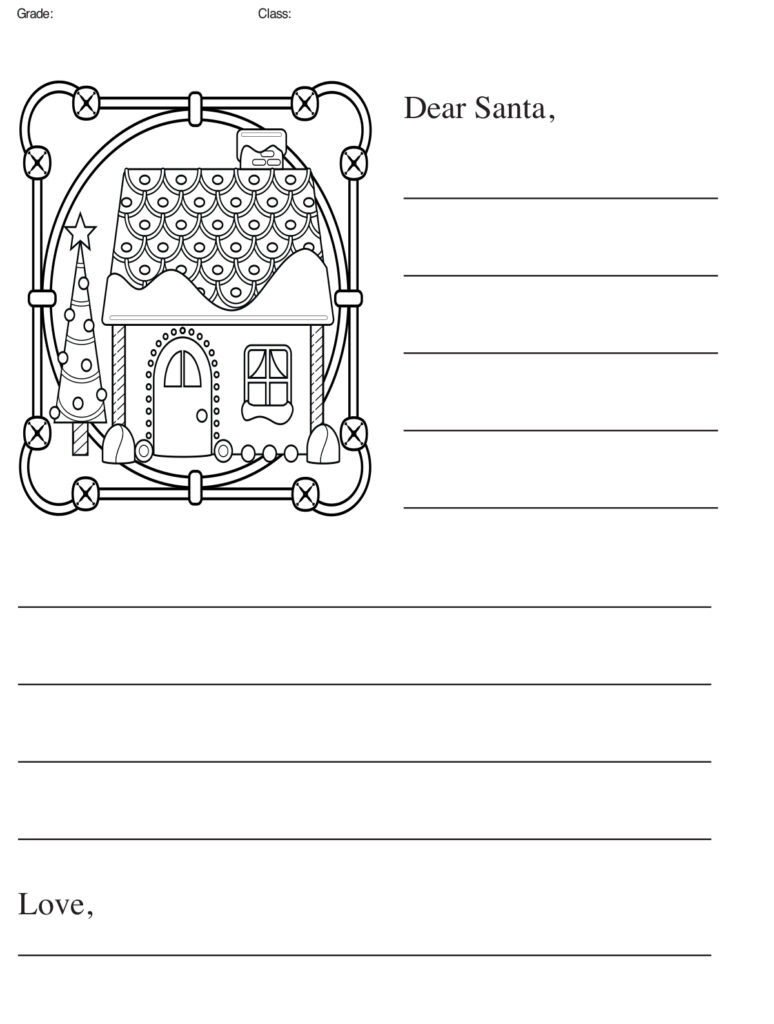
Deadline is Friday, December 15 for the 12-20 & 26th editions. Moundville Times will be closed for the Holidays until Jan. 2.

These will be run in the Christmas Special edition. Please don’t edit them! We want them just as they are. It takes one person 48 – 60 hours to type them all and only up to 2nd grade please. We don’t have enough room for more. Special needs kids are excluded from the 2nd grade rule, of course, and may submit one. Also, please feel free to use your own Santa letter forms if you like. We plan to put any colored/artistic ones we get on the website right before Christmas. Email them to [email protected], fax to 205-371-2788, bring them by the office at 46 2nd Ave. in Moundville or let us know if Kasey or Travis need to stop by the school and pick them up and we’ll be happy to!
Click on the Santa Letter form to download a colorable Santa letter.
• Greensboro Christmas Parade – Saturday, December 9, at 2:30 p.m.
• Carthage Presbyterian Church Candlelight Service – Sunday,
December 10, at 2:00 p.m.
• Supper with Santa at Moundville Public Library – Saturday, December 9, at 5:30 and Sunday, December 10, at 5:30.
SSCC Holiday Events
Shelton State Community College (SSCC) has announced its schedule of holiday events for 2023.
The Martin Campus and C.A. Fredd Campus will close Wednesday, November 22 through Friday, November 24 for Thanksgiving. The College’s regular hours of operation will resume on Monday, November 27.
On Tuesday, November 28, the SSCC Music Department will host the College’s Annual Tree Lighting and Sing-Along at 1:00 p.m. in the Martin Campus Atrium. Sacred and secular holiday pieces will be performed, and the audience will participate in a sing-along. In addition to musical offerings, this year’s event will mark the introduction of Dr. Jonathan Koh as the College’s President and include a special recognition of retirees in attendance. A reception will immediately follow. Now in its thirteenth year, Here Comes Santa Claus is sponsored by the Shelton State Ambassadors and allows students, faculty, staff, and community members to assist those in need. Donations will be accepted through Fri., Dec. 8. To learn how to help, contact Miranda Zapata at [email protected].
The Music Department will present its annual Christmas Concert on Thurs., Dec. 7, at 7:30 p.m. in the Martin Campus Atrium. Featuring the Shelton Singers and the Shelton State Jazz Ensemble, both events are free and open to the public.
On Wed., Dec. 13, the College will sponsor Brunch & Boogie with Seniors at the McDonald Hughes Center from 10 a.m.-1 p.m. The event is free and open to senior citizens. The college will be closed for the holidays Dec. 22- Jan. 2. Regular hours of operation will resume on Wed., Jan. 2, with spring classes beginning on Mon., Jan. 8, 2024. For more information, contact SSCC Media and Communication at [email protected].


Moundville Christmas Parade
Moundville Christmas Parade will be Sun., Dec. 3 at 6 p.m. downtown.
Tuscaloosa Fire Dept. Cookies and Cocoa and Picture with Santa
We are excited about our upcoming event on December 2, featuring cookies, cocoa, and pictures with Santa! Admission to the event is free, but we kindly request that you bring a toy to donate to our Toys for Tots collection bins. We look forward to seeing you on December 2!
TIPS TO AVOID OVERINDULGING ON HOLIDAY TREATS — One of the many pastimes of the holiday season is coming together with family and friends to share a meal with all kinds of savory foods and treats. Dr. Maria Azrad, assistant professor in the department of human nutrition and hospitality management at UA, has several healthy eating tips to keep in mind as you prepare to feast on your favorite foods.
5 TIPS TO MAKE THE MOST OF YOUR NEW YEAR’S RESOLUTIONS — The art of making, and ultimately sticking to, New Year’s resolutions focused on health and wellness can seem like a tall task for some. “The new year often brings excitement for a fresh start and new opportunities for personal goals and self-improvement,” said Sheena Gregg, assistant director of the department of health promotion and wellness and a registered dietitian. “However, New Year’s resolutions can often serve as a point of discouragement when we don’t meet our expectations with our goals.” Gregg provides tips to keep in mind when creating your 2023 resolutions.
UA INFO RADIO PRESENTS SOUNDS OF ‘HILARITAS’ — For the third consecutive year, “Hilaritas,” one of the longest-running performance traditions at the UA School of Music, will air on 92.5 FM UA Info Radio. The program, which includes such holiday favorites as “It’s the Most Wonderful TIme of the Year,” “Feliz Navidad,” and “Do You Hear What I Hear?” will air Friday, Dec. 23, at 7 p.m., Saturday, Dec. 24, at 5 and 8 p.m., and Sunday, Dec. 25, at 8 and 10 a.m., noon, and 3, 5, 7 and 10 p.m.
Watch for Santa on NORAD: www.noradsanta.org
Holiday Food Safety
Keep Your Dogs and Cats Safe From Holiday Hazards
This holiday season, while you’re busy decorating, cooking, and wrapping gifts, remember to watch out for holiday temptations for your pets. FDA veterinarian Carmela Stamper tells how to keep your animals safe.
Stocking Stuffers and Pet Treats
If your dog received a stocking full of pet treats, make sure he doesn’t gobble them all up at once. According to Stamper, if he eats the treats whole, or eats too many at once, he may not be able to digest them. Unchewed pet treats can get stuck in the trachea (windpipe) or gastrointestinal tract (esophagus, stomach, and intestines), particularly in small dogs.
If your dog is in obvious distress from eating too much too fast, says Stamper, contact your vet immediately. Some telltale signs are drooling, choking, or vomiting.
Take note of timing. If a bone or chew toy lodges in your dog’s stomach or intestines, the symptoms might not be immediate. Hours to days later, he may vomit and have diarrhea, be less active, not want to eat, and have stomach pain. If the blockage stays there too long, your dog may become very ill. The worst-case scenario is when a hole develops at the blockage site, causing a life-threatening infection.
“When in doubt, contact your veterinarian, who may need to take x-rays or use an endoscope to see what and where the problem is,” Stamper says. Your dog may even need surgery to remove blockages in the intestines.
Tinsel and Ribbons
When decorating your tree and wrapping or unwrapping gifts, keep a close eye on where you leave your leftover tinsel, string, and ribbons.
“Your cat may find these decorations irresistible because they look like easy-to-catch, sparkly, and wiggly prey,” Stamper says. In fact, they can cause serious stomach and intestinal damage.
Symptoms may take a few hours or several days to appear, and include vomiting, diarrhea, lack of appetite, and decreased activity. Play it safe by keeping tinsel off the tree and collecting all ribbons and strings after gifts are opened.
Holiday Plants
If you have holiday plants such as poinsettias, holly, or mistletoe around, take care. When you display (or dispose of) these plants, your cat may decide they’re good to eat, Stamper says.
Poinsettias, for example have a milky white, latex sap that can irritate your animal’s mouth and stomach and may cause vomiting and diarrhea. “If your cat has snacked on poinsettia leaves, you can help him by picking up his food and water dishes for a couple of hours to let his stomach settle,” Stamper advises.
The National Animal Poison Control Center (NAPCC) states that the major toxic chemicals in mistletoe are lectins and phoratoxins. These chemicals affect the heart, causing low blood pressure and slowed heart rate.
“Fortunately for your cat, severe mistletoe toxicity is uncommon and usually occurs only if your pet eats a large amount,” Stamper explains. Symptoms include vomiting and diarrhea, difficulty breathing, slowed heart rate, low blood pressure, and odd behavior.
While holly isn’t as harmful, you should still discourage your pets from eating the berries and leaves, Stamper says. In both dogs and cats, the plant’s toxins can cause drooling, vomiting, diarrhea, loss of appetite, and decreased activity.
Table Scraps
Resist the temptation to give your pet table scraps that are high in fat, such as fat trimmed from meat or skin from your roasted turkey or chicken. “In addition to the typical gastrointestinal upset, rich, fatty foods can cause a potentially life-threatening and painful disease called pancreatitis,” Stamper says. The most common symptoms of pancreatitis in dogs include vomiting, stomach pain, restlessness, shaking, diarrhea, fever, and weakness.
In cats, the symptoms are less clear and harder to notice, such as decreased appetite and weight loss.
And be careful what you put in the trash can, Stamper warns. Dogs, especially, are notorious for helping themselves to the turkey carcass or steak bones disposed of there. As with too many treats, bones can get stuck in your dog’s esophagus, or trachea. Sharp pieces of bones can also injure your dog’s mouth, esophagus, and stomach, and can cause severe internal injuries.
“Don’t forget, once dinner is done, dispose of the leftovers and bones somewhere where your pets can’t get to them,” Stamper says.
Other Human Treats, Including Alcohol
As many pet owners know, chocolate can be dangerous to your dog or cat. Chocolate toxicity depends on the type and amount of chocolate your dog has eaten, his body weight, and if he’s extra-sensitive to the toxic compound in chocolate called theobromine, Stamper says.
Moreover, the seemingly harmless mints common in the holiday season cause life-threatening problems for your dog if they contain xylitol, also found in food items such as candy, gum, some peanut butters, and baked goods, and personal hygiene products, such as toothpaste and mouthwash. Symptoms occur quickly after dogs eat xylitol-containing items, Stamper says. Vomiting is generally first, followed by symptoms associated with the sudden lowering of your dog’s blood sugar (hypoglycemia), such as decreased activity, weakness, staggering, incoordination, collapse, and seizures. Check the package labels to see if they contain xylitol.
After eating chocolate, some pets develop more severe complications, including liver failure, bleeding disorders, and death. If you suspect your dog has eaten chocolate or xylitol-containing items, consider it an emergency and call your veterinarian immediately.
Finally, there’s alcohol. Depending on how much they drink, pets that consume alcohol can develop serious problems. The most common symptoms in pets associated with the consumption of alcoholic beverages are vomiting, diarrhea, incoordination, weakness, decreased activity, difficulty breathing, and shaking. In severe cases, coma and death from respiratory failure (lungs stop functioning) can occur. “Don’t accidentally leave your eggnog on the coffee table,” Stamper says.
Laser toys: how to keep kids safe
Many kids (and parents) who have seen Luke Skywalker battle Darth Vader with a light saber think lasers are cool.
What they may not know is this: When operated unsafely, or without certain controls, the highly-concentrated light from lasers—even those in toys—can be dangerous, causing serious eye injuries and even blindness. And not just to the person using a laser, but to anyone within range of the laser beam.
The U.S. Food and Drug Administration is concerned about this potential danger to children and those around them and in 2014 issued a guidance document (PDF 60K) on the safety of children’s toy laser products.
“A beam shone directly into a person’s eye can injure it in an instant, especially if the laser is a powerful one,” explains Dan Hewett, health promotion officer at the FDA’s Center for Devices and Radiological Health.
Moreover, eye injuries caused by laser light usually don’t hurt. Vision can deteriorate slowly and, therefore, may go unnoticed, for days and even weeks. Ultimately, the damage could be permanent, Hewett says.
Some examples of laser toys are:
• lasers mounted on toy guns that can be used for “aiming”;
• spinning tops that project laser beams while they spin;
• hand-held lasers used during play as “light sabers”; and
• lasers intended for entertainment that create optical effects in an open room.
A laser creates a powerful, targeted beam of electromagnetic radiation that is used in many products, from music players and printers to eye-surgery tools. The FDA regulates radiation-emitting electronic products, such as lasers (including children’s toy laser products), and sets radiation-safety standards that manufacturers must meet.
Toys with lasers are of particular interest to the FDA because children can be injured by these products. Because they are marketed as toys, parents and kids alike may believe they’re safe to use.
For toys to be considered minimal risk, the FDA recommends that the levels of radiation and light not exceed the limits for Class 1, the lowest level in regulated products as defined by the International Electrotechnical Commission (IEC).
Lasers used for industrial and other purposes often need higher radiation levels for their intended functions. But these higher levels are not needed for children’s toys—and if they are present, they can be dangerous.
Hand-held laser pointers—often used in business and higher education to help illustrate presentations—have increased in power 10-fold or more over the last decade. And while adults may buy a laser pointer for use in work, kids often play with them for amusement.
The fact that lasers can be dangerous may not be evident, particularly to the children who inappropriately use them as toys, or to the adults who supervise them.
Laser Safety: Tips to Keep in Mind
Remember that laser products are generally safe when they follow the legal limits and are used as directed. But lasers can cause harm if not used properly. The FDA recommends the following general safety tips for consumers.
• Never aim or shine a laser directly at anyone, including animals. The light energy from a laser aimed into the eye can be hazardous, perhaps even more than staring directly into the sun.
• Do not aim a laser at any vehicle, aircraft, or shiny surface. Remember that the startling effect of a bright beam of light can cause serious accidents when aimed at a driver in a car, for instance, or otherwise negatively affect someone doing another activity (such as playing sports).
• Look for an FDA-recommended IEC Class I label on children’s toy lasers. The label says “Class 1 Laser Product,” which would clearly communicate that the product is of low risk and not in a higher emission level laser class.
• Do not buy laser pointers for children, or allow children to use them. These products are not toys.
• Do not buy or use any laser that emits more than 5mW power, or that does not have the power printed on the labeling.
• Immediately consult a health care professional if you or a child suspects or experiences any eye injury.
FDA gives simple steps to help ensure that harmful bacteria won’t be a guest at your festivities.
How to Cook a Whole Chicken or Turkey
USDA Food Safety 15 Sec -The only way to know food has been cooked to a safe internal temperature is to use a food thermometer.
Poinsettias: Caring for the Christmas Flower
| by Justin Miller |
Poinsettias reign supreme as the main flowers of the holiday season. Also known as the Christmas flower, these beautiful plants offer a variety of colors that compliment any holiday decorations. During Christmas, red and green poinsettias are the most common. However, there are a wide variety of other colors, including pink, white, orange, marbled, pale green and cream. To keep poinsettias thriving through the holidays, there are few things people must do.
Chip East, an Alabama Extension commercial horticulture regional agent, said to have a vibrant poinsettia through the season, the first step is choosing the correct plant.
“When picking a poinsettia, choose one with colorful bracts but one that the blooms have not opened,” East said.
Bracts are the colorful leaves most people associate with the plant. The actual poinsettia flower is the small green or yellow flower in the center of the bracts. Plants should appear full, with dark green leaves attached from the colored bracts to almost the base of the plant. The leaves should be completely free of disease and insects.
Care and Maintenance
Poinsettias do not tolerate high moisture or shaded areas. After purchasing, place the poinsettia in a window seal when possible. They can be moved to areas for display when needed. They thrive in bright sunlight with moderate temperatures no higher than 70 degrees. However, if the sunlight is too direct, the bracts will discolor.
“If a decorative wrap is around the pot, remove the plant from the wrap before watering,” East said. “Allow the water to drain before placing the plant back in the wrap.”
The average lifespan of an attractive poinsettia is about two to four weeks, or with exceptional care, six to eight weeks. However, it is actually a perennial plant that could live for many years. If someone wants to attempt to reflower and maintain their poinsettia, it will need more attention than in the Christmas season.
“Getting a plant to reflower is difficult for the home grower but can be done,” East said. “Spending time to reflower a poinsettia would make a home grower appreciate the nursery that originally grew it.”
For more information on caring for Christmas poinsettias, visit www.aces.edu or contact your county Extension office.
